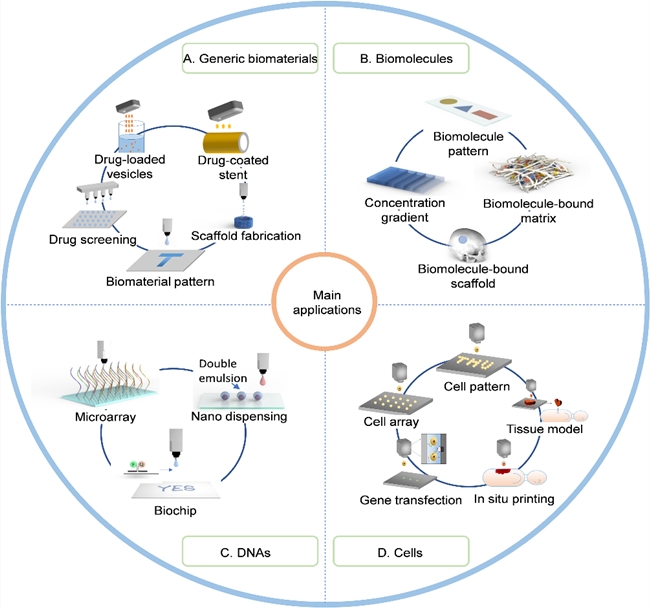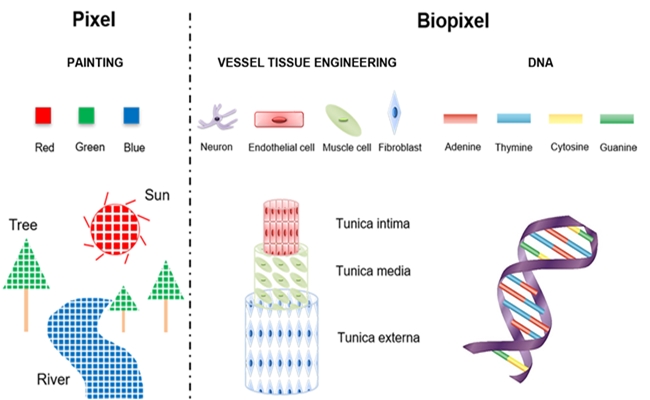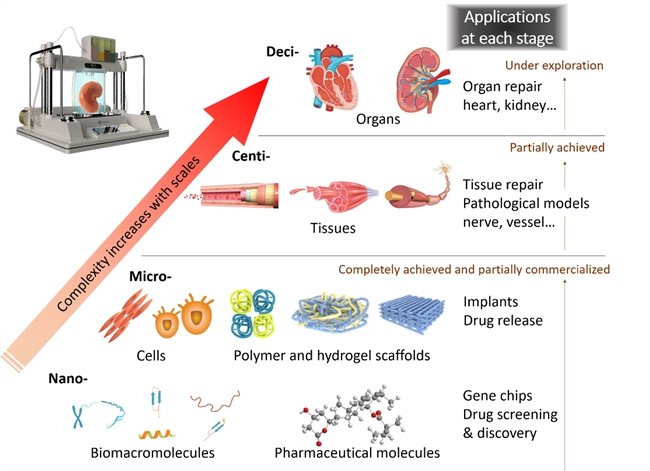
In recent years, 3D bioprinting, as a promising method to fabricate tissues, organs and other living bodies, has attracted wide attention in the fields of medicine, biology and engineering. Inkjet printing, has become one of the three representative technologies in the field due to innovative research that emerged, and has made significant impact on basic research and industrial transformation.
Recently, Professor Xu Tao and his team from the Biomanufacturing Center of Tsinghua University’s Department of Mechanical Engineering and the Tsinghua-Berkeley Shenzhen Institute (TBSI) published an article in the international journal Chemical Reviews, proposing the concept of "biopixels" in live inkjet printing.
The review article, "Inkjet Bioprinting of Biomaterials" gave a comprehensive introduction of the development of inkjet bioprinting technology and research progress at home and abroad. Current challenges and solutions of the technology were also discussed.

Fig. 1: Typical inkjet bioprinting biomaterials and applications
Inspired by color printing pixels, a new concept, biopixels, was put forward. Progenitor cells derived from four major tissues (nerve, epithelium, muscle and connective tissue) in the human body were defined as "biopixels" of 3D cell bioprinting. According to given location information, these "biopixels" can be printed and assembled in different numbers and proportions, and induced to differentiate and form different tissues and organs. Moreover, a higher content of "biopixels" per unit volume leads to more adequate intercellular connections and stronger synergistic effect of different cells, meaning a higher resolution.

Fig. 2 Schematic diagram comparing traditional printing pixels and "biopixels"

Fig. 3 Roadmap of 3D bioprinting
Professor Xu, corresponding author of this paper, has been engaged in inkjet bioprinting technology research since 2001. He is one of the earliest researchers in the world to develop cell and organ printing technology, and holds the world’s first cell printing patent. He was first-author of the first paper related to cell inkjet printing, and the paper was reported as a major technological breakthrough by the American Science Journal (Science, September 24, 2004, p. 1895). In 2003, the American Business 2.0 magazine rated cell and organ printing technology as one of the six technologies that will change the world in the 21st century.
Prof. Xu was invited by Chemical Reviews to write this article, which aims to promote the understanding and rethinking of inkjet bioprinting technology, and facilitate its use in pharmaceutical development, biofabrication, tissue engineering, information storage and other fields. Prof. Xu’s students, Li Xinda (Ph.D. student in the Department of Mechanical Engineering) and Liu Boxun (Ph.D. student at TBSI), are co-first authors.
Cover Design: Tang Huiwen, supervised by Wen Xueyuan
Writer: Liu Boxun
Editor: Karen Lee


